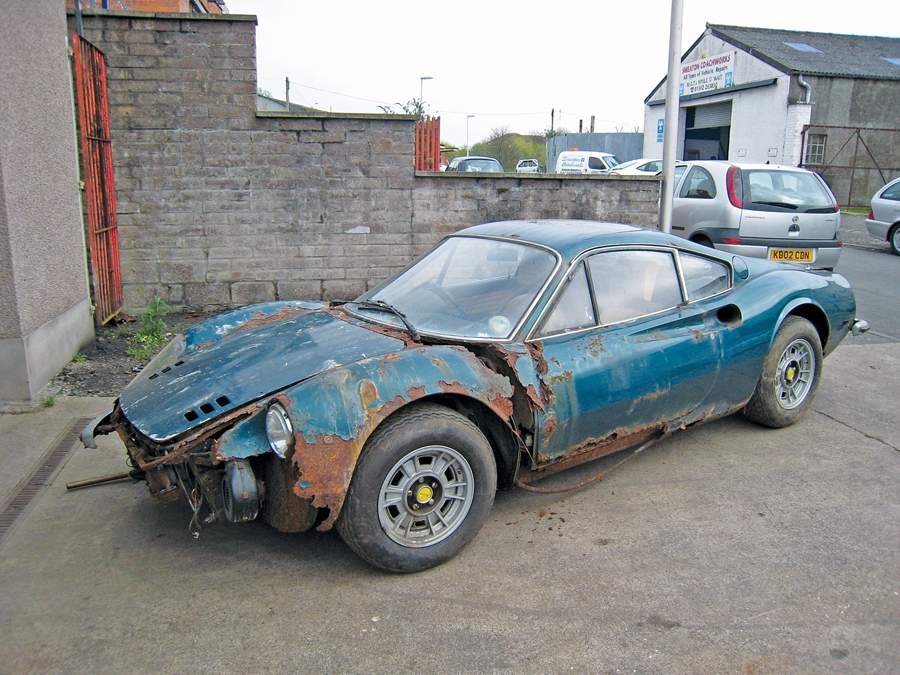Chassis Number: 5596
The car on Pininfarina’s stand at the 1965 Paris Auto Salon was the forecast of Ferraris to come. Called the “Dino 206 S Speciale,” it was a sleek, competition-inspired coupe to be powered by the Ferrari-designed, mid-mounted V6. A “research prototype” built on a racing chassis, it was merely eye candy, as it had no engine. One year later, the real car appeared, called the Dino Berlinetta GT. It was a masterful blending of sensuous curves, outstanding surface development and stunning proportions.
Presented from a deceased person’s estate, Silverstone Auctions is pleased to offer a truly unique chance to acquire a garage-find 1973 Ferrari Dino that has been hidden away since 1975 and shows just 13,932 miles.
The owner was a well-known motorcycle racer who used to drive like he was racing on a track everywhere he went. Allegedly he was driving home in the Ferrari at his usual breakneck pace when the police spotted him. He outran the police, raced straight home, parked the Dino in the garage and feared using the car for some time. It would be 39 years until it saw the daylight once again.
Unfortunately, a leaky garage roof has meant the car is now rotten as a pear and in need of a total restoration. The prices of Ferrari Dinos continue to rise in leaps and bounds, so it is surely a worthwhile project for someone who wants a unique Dino that is a genuine barn find.

